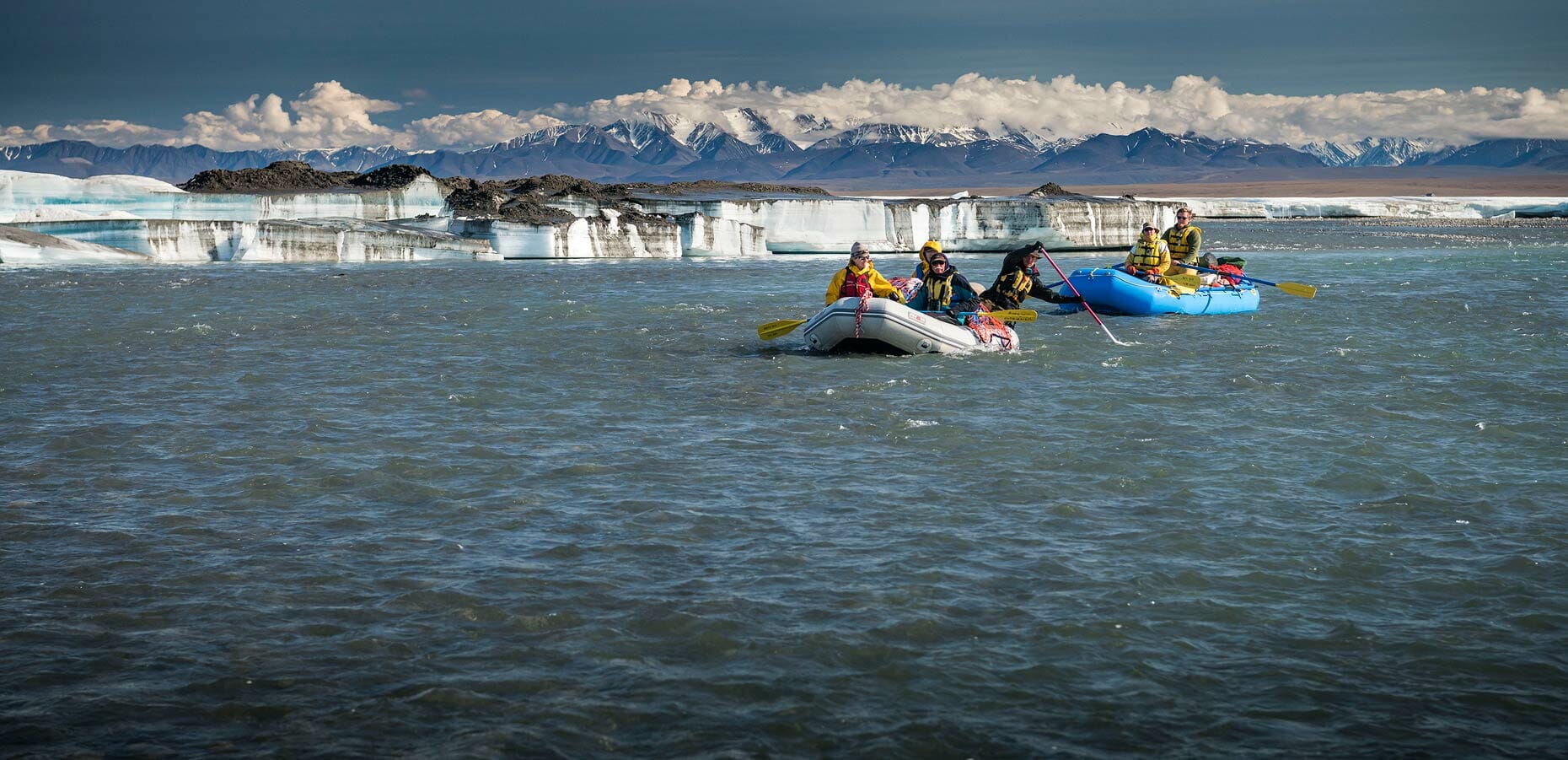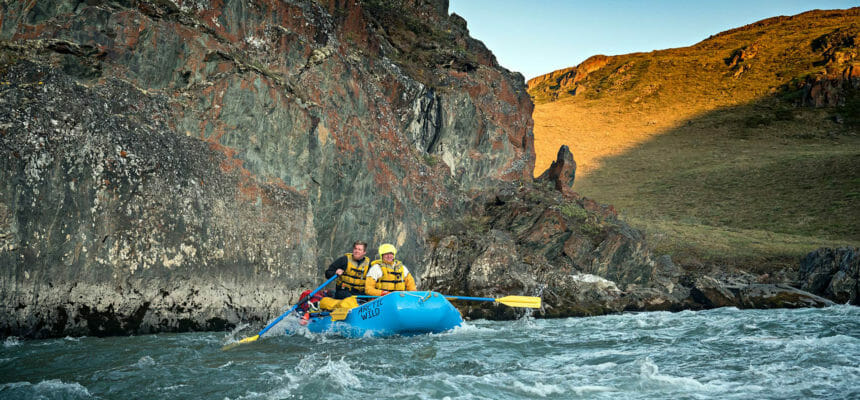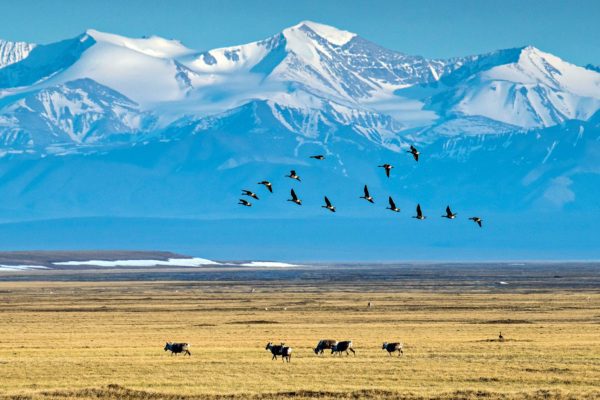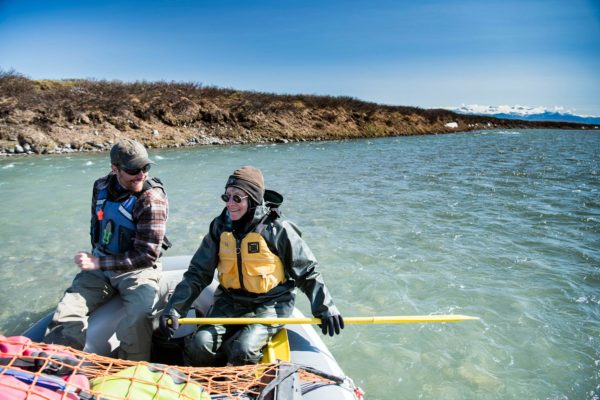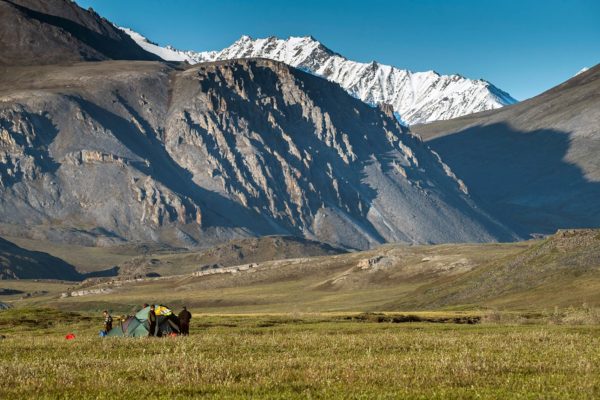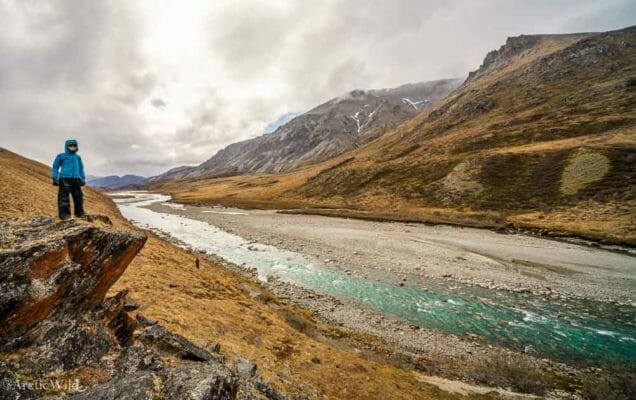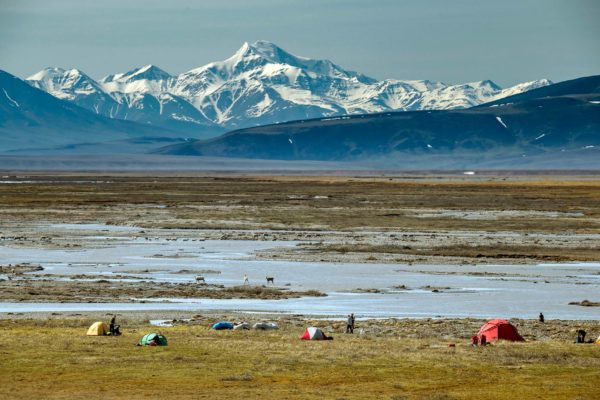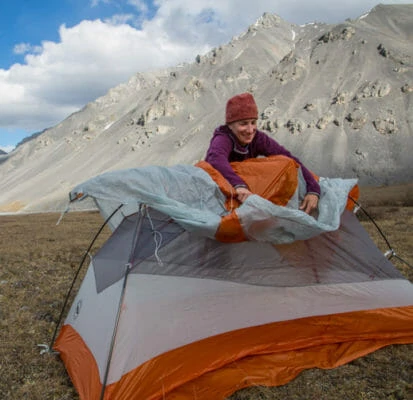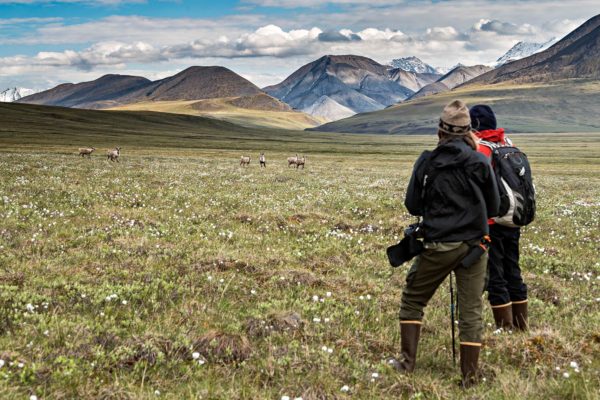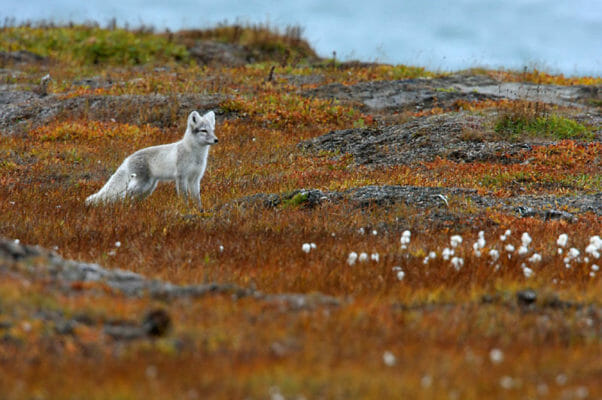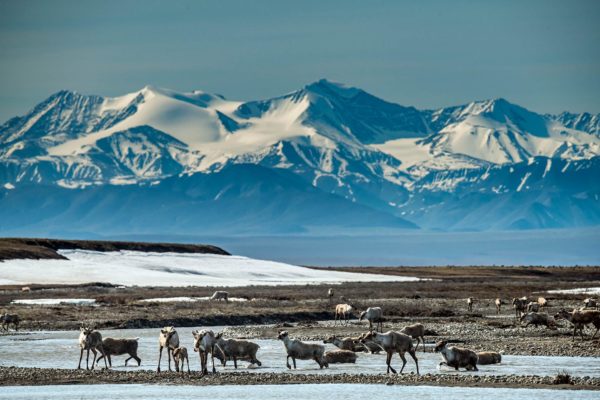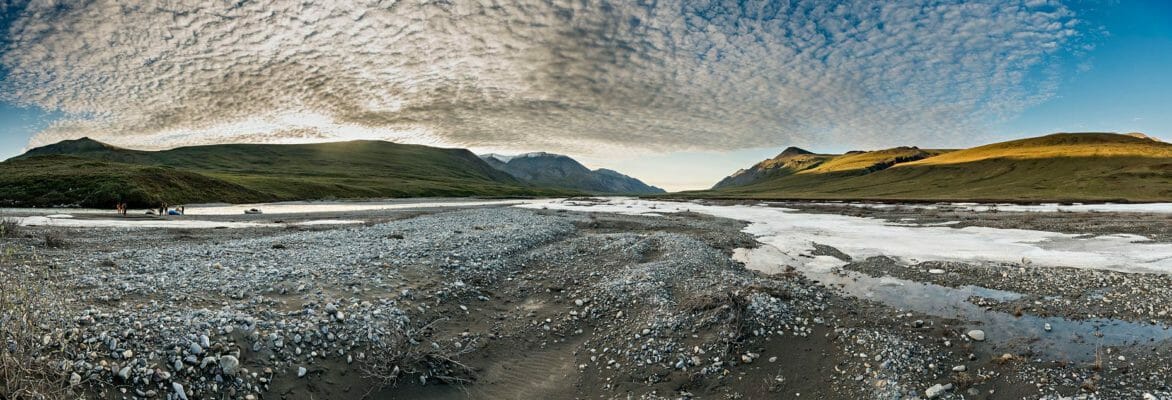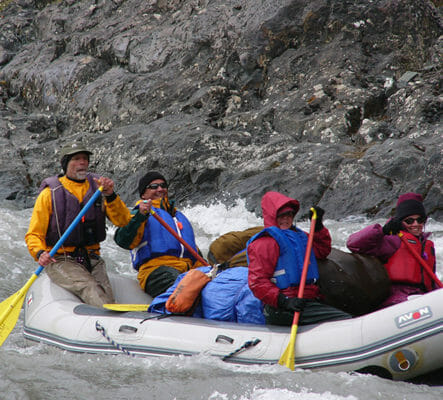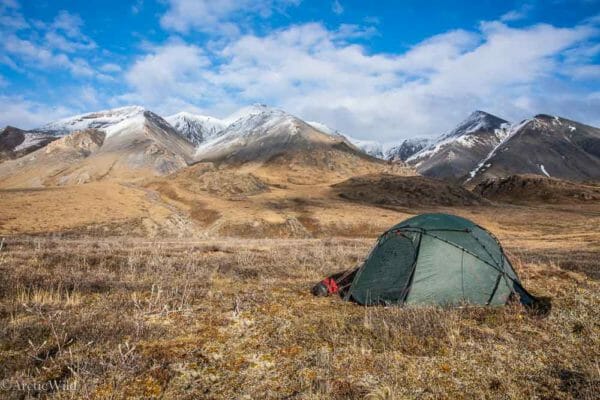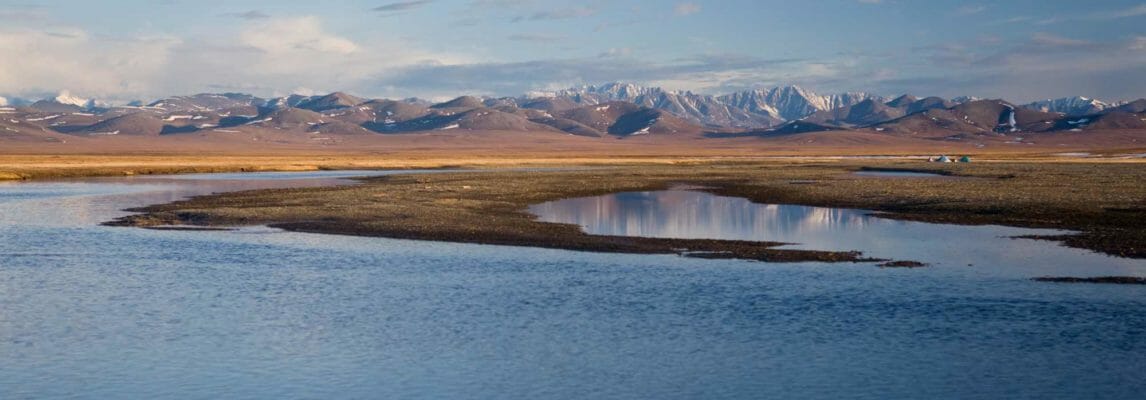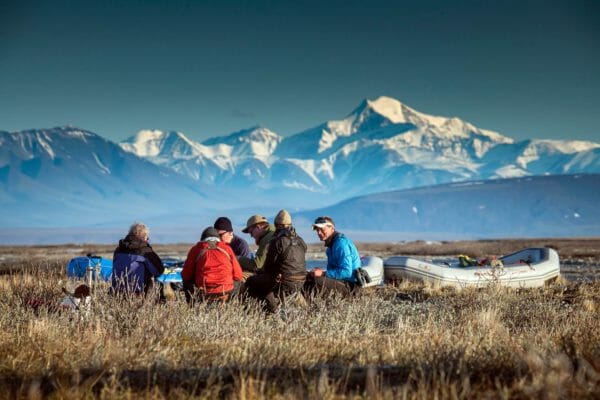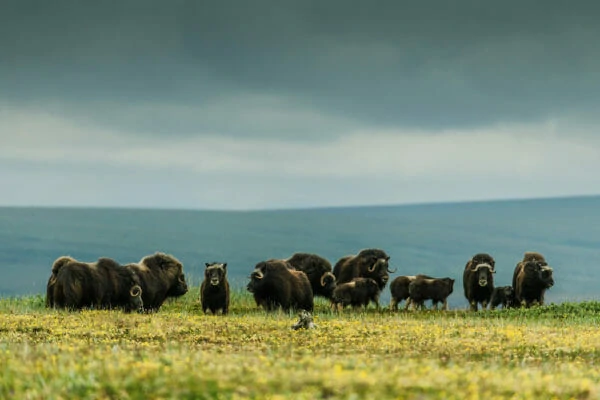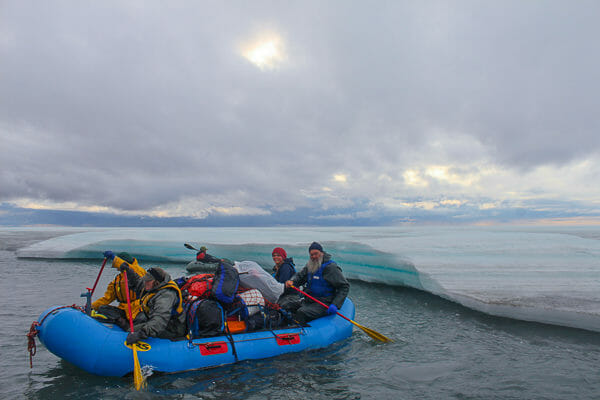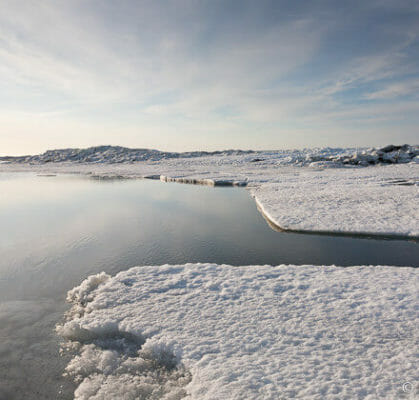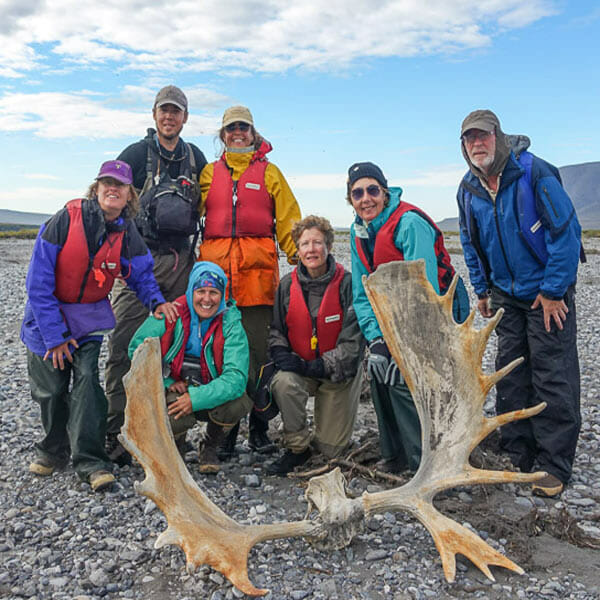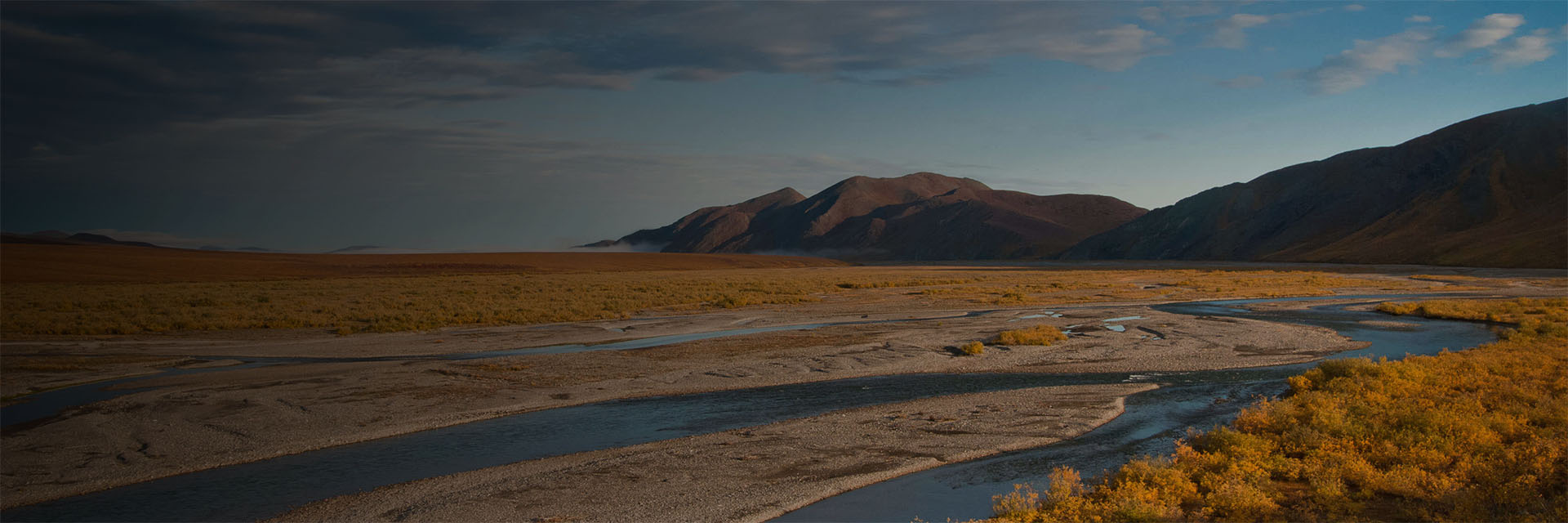Last updated: April 3, 2025
Itinerary
What follows is a general flow of events. Expect the unexpected and prepare to be flexible.
June 18
Pre-trip meeting with your guide(s) in Fairbanks at 4:00 pm at Arctic Wild headquarters.
June 19
Fly north from Fairbanks across the Yukon River, the Arctic Circle, and the Brooks Range, to the headwaters of the Hulahula River. We’ll make a comfortable camp, have a hearty dinner, and watch the sun refuse to set! Welcome to the Arctic. If motivated, we can climb a small hill for a lovely view of the valley ahead.
June 20
We’ll spend our first full day of the trip hiking on the tundra and learning about the refuge. From our camp in the Hulahula’s headwaters, we can climb into the high country for views to the Continental Divide. We’ll glass for Dall sheep in the peaks and press our faces close to the ground to inspect emergent wildflowers.
June 21-22
After a safety discussion, we can launch our four-person rafts into the current and work on paddling as a team on the small and technical Hulahula River. We’ll back-paddle away from rocky cliffs, skitter over the shallow cobbles, and weave our way past remnants of last winter’s ice. The river is fast and fun.
At intervals, we’ll pull over and search the gravel bars for fossilized coral or we may have the opportunity to get out the spotting scope so we can watch a distant grizzly, digging for ground squirrels.
We’ll have time (and infinite daylight) to take a hike after dinner and explore away from each of our riverside camps.
June 23
As we approach the northern edge of the mountains we enter a spectacular canyon and the river gains speed and difficulty. Here we encounter a couple of Class III rapids and numerous Class II sections. We may stop and scout or even line the boats through the rapids if the water level makes the risk of running them too great.
June 24
Once through the rapids, we reach the mountain front where the Brooks Range ends and the foothills begin. We encounter many unique species of plants and animals where the two habitats intersect and we’ll have a full day here to hike and relax.
If you are particularly ambitious, we can climb Mt. Kikiktat for northern views that stretch almost to the Arctic Ocean. Or grab your binoculars and stroll to a nearby lake and observe waterfowl nesting and feeding on the edge of the Coastal Plain.
June 25-26
The Hulahula gains a few tributaries and though we are out of the biggest mountains, the river remains fast and fun. The technical rapids are behind us but we’ll enjoy long wave trains and varied paddling as we make our way north through the foothills.
This is the area where we most frequently see caribou on the Hulahula. The calves are just weeks old and they grow quickly while their mothers feed on the rich sedges of the Jago Uplands. Most years there are few, if any, mosquitoes this early in June so the caribou are typically relaxed and spread out. Watching them drift across the rolling landscape while the sun lingers in the northern sky is a quintessentially Arctic experience.
Eventually, the foothills melt into the coastal plain and the sky swallows us in its enormity. As the land grows flat, the air fills with birds and begins to feel more coastal.
June 27-28
Before entering the Beaufort Sea, the Hulahula splits into several channels, floods tundra ponds, and winds its way into the complex delta that it shares with the Okpilak River. The delta is one of the most biologically interesting places in the Arctic Refuge and we’ll have some time to enjoy it.
We will need to paddle the few remaining miles of the Hulahula, portage 3/4-mile from the Hulahula to the Okpilak River (you get to paddle two rivers in one trip!), and then paddle across the coastal lagoon to a barrier island where we’ll eventually meet the plane. We could do all that in a single day but we like to savor the area. We’ll spend some time birding in the delta, and still leave enough time to explore the barrier island.
The gravel island is austere and a bit foreboding, but full of interest. We’ll be looking for old polar bear tracks and, if conditions permit, walking on the sea ice! At day’s end, we can build a bonfire from driftwood and watch the midnight sun.
June 29
Awake this morning at the northern edge of the continent. Weather permitting, we get a quick flight to the Inupiat Village of Kaktovik and then a longer flight back south across the Brooks Range, the Arctic Circle, and the Yukon River to Fairbanks arriving late in the day. Time to take a shower!




